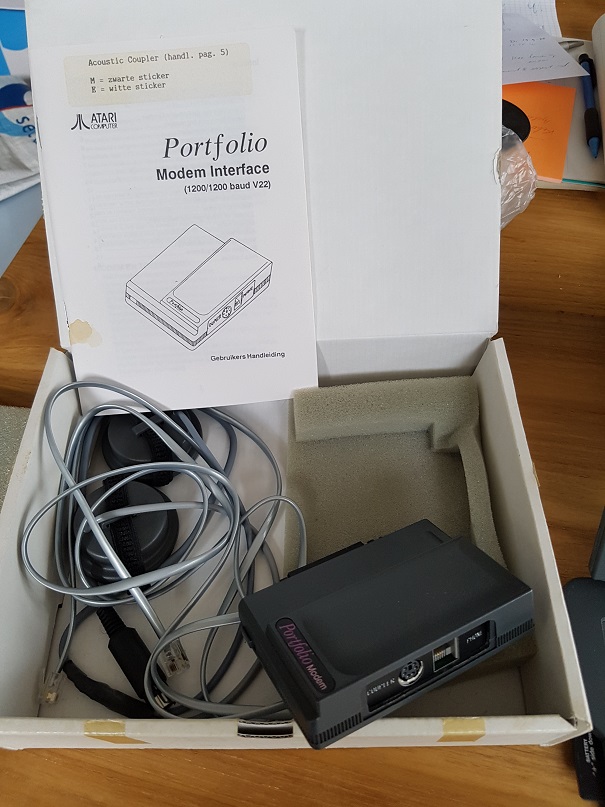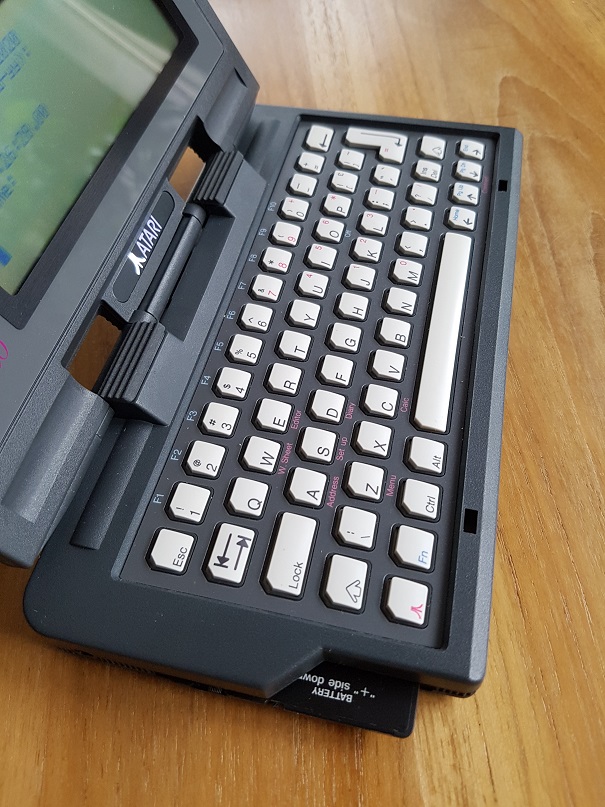Recently, after almost three decades of slipping away into oblivion, I retrieved my Atari Portfolio, a palmtop computer, from old stuff, safely stacked away in a box in the attic. It still had three batteries inside with the text “use before 2002” and, fortunately, the batteries had not leaked. Three fresh batteries effectively revived this amazing piece of history from hibernation. The RAM cards also work perfectly with new CR2016 battery cells. The only thing needed now is to download the software I wrote -using Turbo Pascal and inline assembly- in 1991.
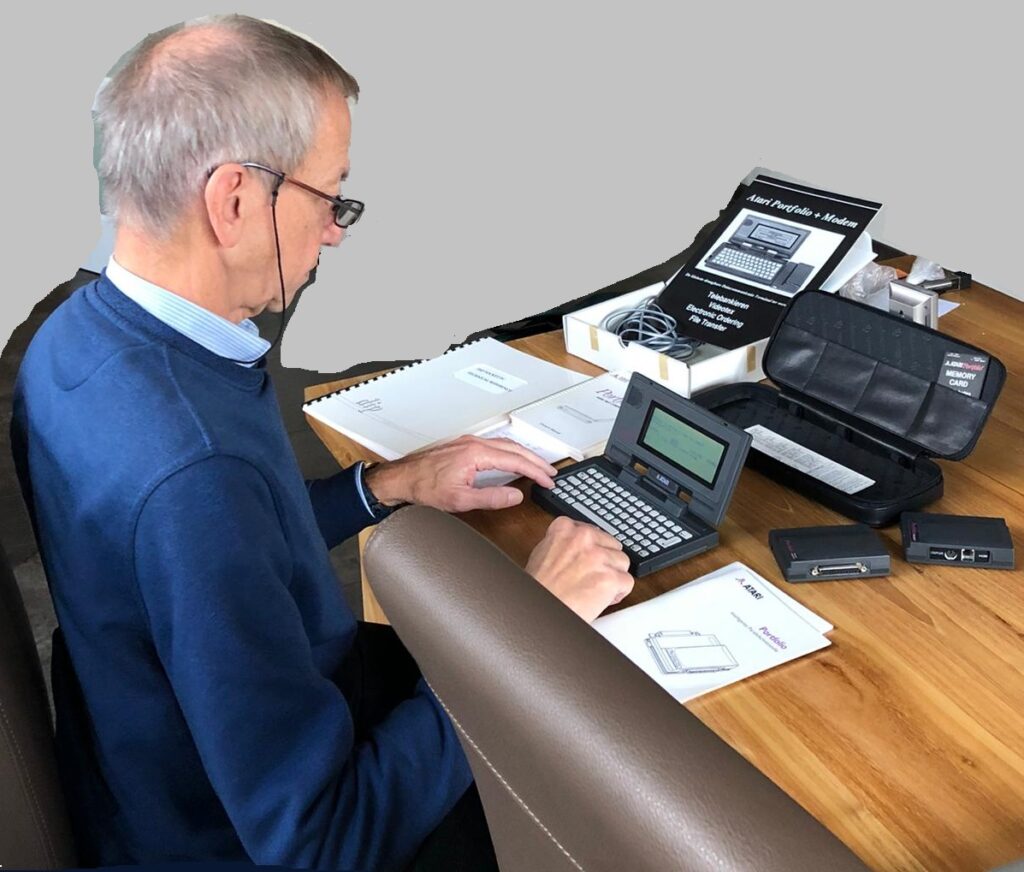
The Atari Portfolio was introduced in 1989 by Atari Corp. as the first palmtop IBM-PC compatible computer. Its operating system is a DOS version called DIP DOS, which is mostly compatible with DOS version 2.11. More information can be found at the site of the Atari Museum and at Wikipedia.
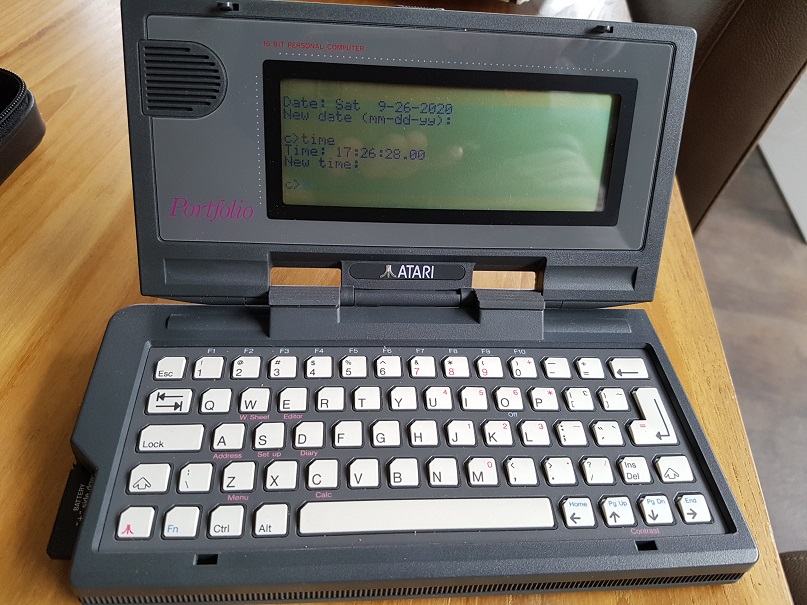
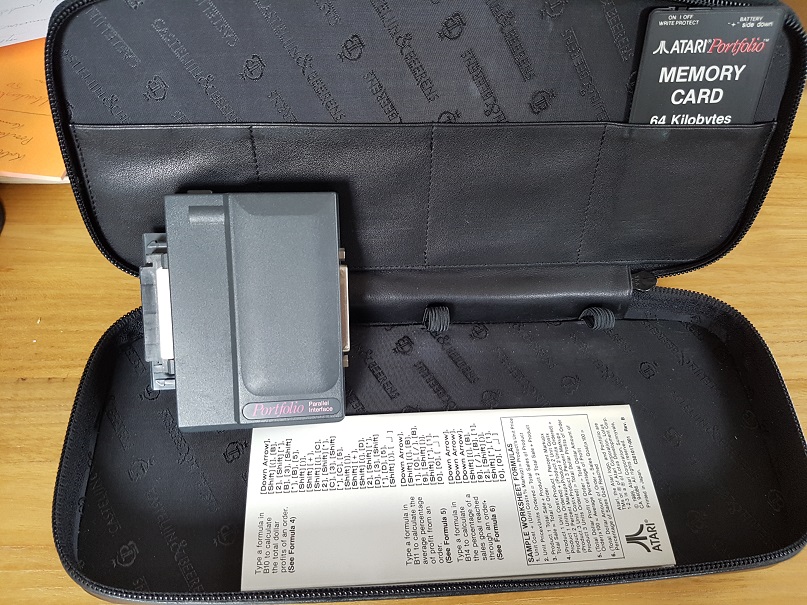
I purchased my Atari Portfolio around 1990/1991 (serial nr. R1023041878) at a shop called Faster Systems from Eindhoven, The Netherlands, and expanded it with a parallel interface, acoustic modem, and two RAM memory cards, one of 64 Kbits the other of 128 Kbits. The pictures show the Portfolio with the 128 Kbits RAM card inserted in the card slot at the left.
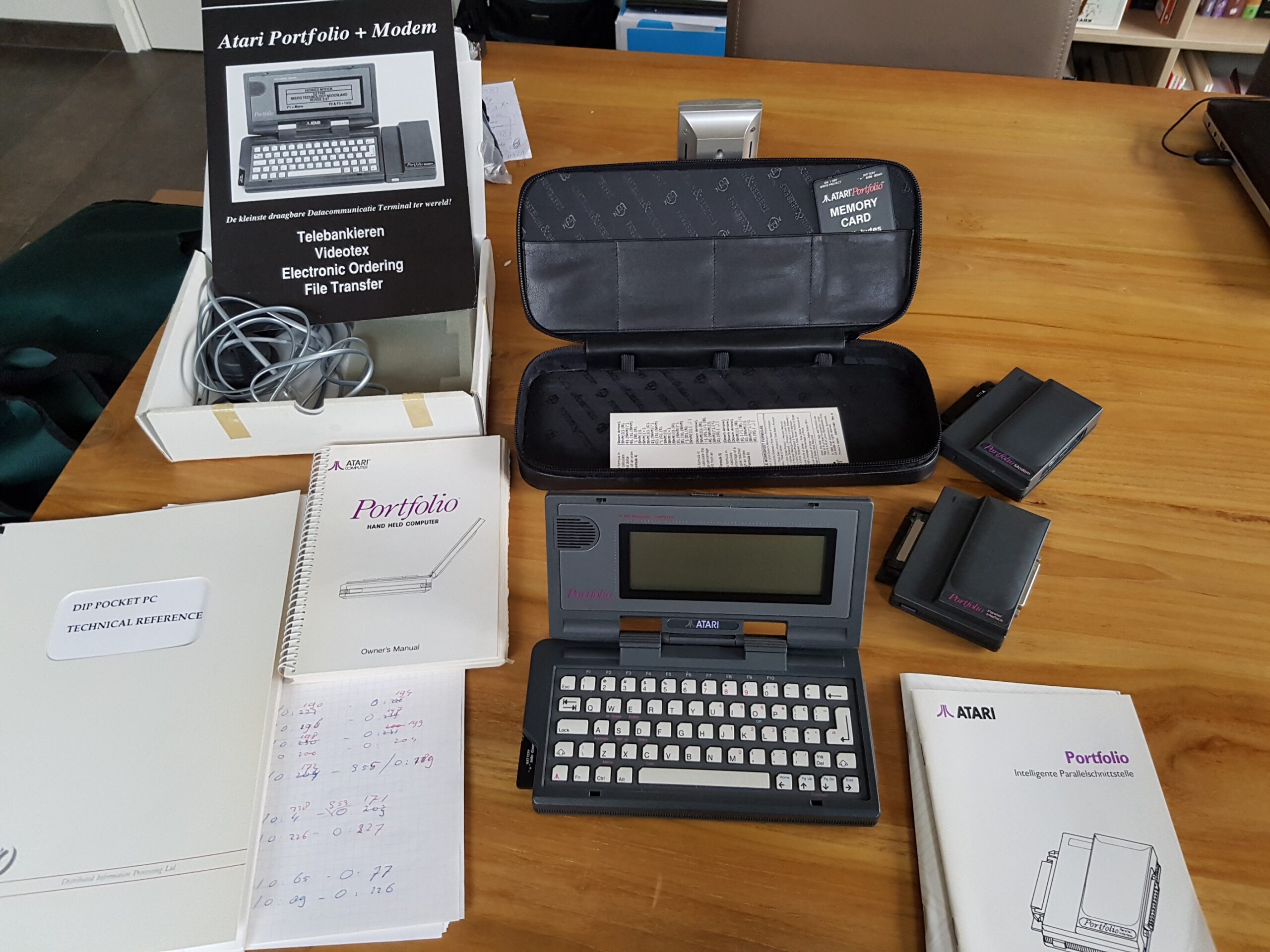
I had great plans for the palmtop computer. Of course, I was to develop encryption software for the Portfolio in my newly founded company ConCiSE Security Engineering. 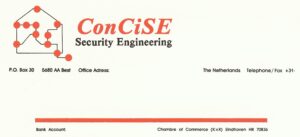 In fact, I did develop encryption software after I had worked through the technical reference manual from DIP, which I had to purchase separately. One of the programs I developed was an encryption module that was compatible with the PX-1000Cr from Philips. Yes, indeed the pocket telex with the weakened encryption algorithm from NSA.
In fact, I did develop encryption software after I had worked through the technical reference manual from DIP, which I had to purchase separately. One of the programs I developed was an encryption module that was compatible with the PX-1000Cr from Philips. Yes, indeed the pocket telex with the weakened encryption algorithm from NSA. 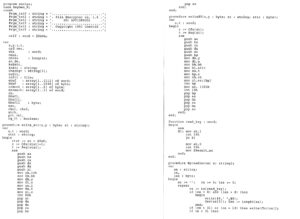
I even bothered about copy protection on RAM memory cards and integrity of the encryption software. These features turned out to be fundamentally impossible, although there were some tricks to make hacking, copying and modifying the software a bit more difficult for hackers. The project stopped and died an early death for a number of reasons. Developing this software takes time and I had a growing number of consultancy and R&D activities. Moreover, the portfolio disappeared from the market after a couple of years. It was an educational project, however, and I enjoyed working with this innovative device.
